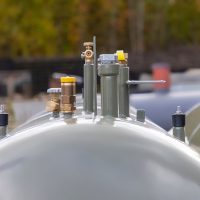UST Regulations: Then and Now

Underground Storage Tanks were first regulated by the Environmental Protection Agency (EPA) in 1988, and while a lot happened over the years, no significant changes to those original regulations were made until 2015. Those 2015 regulations are the ones we work under today, but to fully understand their import, it’s helpful to compare them to what came before. As a company that has been in the underground storage tank business for over 100 years, we at Herbert Lutz & Company have lived and grown alongside every regulation that has come along. See below for a look at the first set of UST regulations from 1988 compared to today. For help with UST or AST installation, removal, servicing, or site remediation in New Jersey or Florida, count on the experts at Lutz Tanks to meet your needs.
Operator Training
There is nothing to compare here. That’s right, the original 1988 regulations didn’t come with any requirement for operator training. Although it may seem surprising, no requirements for operator training appeared at the federal level until the Energy Policy Act of 2005, which required operator training in any state that received money from the EPA. Per the 2015 regulations, owners and operators must designate at least one person for A and B operator classes and everyone that meets the definition of a Class C operator. The regs define minimum areas of training for designated operators and require retraining for any UST system deemed out of compliance.
Secondary Containment
The 1988 regulations required secondary containment and interstitial monitoring, but only for tanks housing hazardous substances. Today, all new and replaced tanks and piping must include secondary containment and interstitial monitoring, including petroleum tanks, with a few exceptions.
Operation and Maintenance
Per the original regulations, cathodic protection testing was to be performed every three years, internal linings were to be inspected periodically, line leak detectors tested annually, and release detection equipment was subject to operation and maintenance in accordance with instructions from the manufacturer. Since 2015, owners and operators have been required to conduct walkthrough inspections of spill prevention and release detection equipment every 30 days. Additionally, containment sumps and handheld release detection equipment must be inspected annually. Further regs added more specific testing requirements of liquid tightness, overfill prevention, and more on an annual or triennial basis.
Deferral
In 1988, release detection technology had not reached the stage for monitoring remote sites, so monitoring was deferred for UST systems storing fuel for emergency power generators. By 2015, technology has advanced far enough to remove this deferral and require release detection monitoring from remote locations.
Internal Lining
The 1988 regulations allowed owners and operators to add another internal lining, cathodic protection, or both to a UST that used internal lining as the sole method of corrosion protection when the internal lining failed periodic inspection and could not be repaired. This reg was revised in 2015, requiring such tanks to be permanently closed instead. This change recognized that while lining might extend the life of some tanks, it was not a permanent solution, and taking those older tanks out of service was a better way to prevent releases into the environment.
Notification
The original regulation required tank owners to notify the appropriate state or local agency within 30 days of putting a UST system into use. In 2015, this requirement was updated to require a 30-day notice after any change in ownership of the UST, along with other notification requirements.
Fuel Compatibility
Recognizing that new fuels with different chemical properties continue to enter the marketplace, the 2015 regulations updated the 1988 rules requiring USTs to be made of or lined with materials compatible with the substance they are storing.
Repairs
Testing has always been required after repairs to a tank were made, but the first round of regulations narrowly defined what types of repairs required testing. Before 2015, only repairs associated with a release required testing. That linkage was removed in 2015, along with the addition of other post-repair testing requirements.
Interstitial Monitoring Results
System testing after suspected releases has been required since 1988. The 2015 update clarified this requirement, including the application of interstitial monitoring alarms and the option of closing the tank if a leak is confirmed.
Contact Lutz Today for Help With USTs and ASTs in Florida and New Jersey
This post only covers a fraction of UST regulations then and now; EPA regulations are far too extensive to cover in one blog post, even with just a summary overview. For help with the installation, maintenance, or removal of underground storage tanks on your property, contact Lutz Petroleum Equipment Installation in Florida at 954-971-5222 or Herbert Lutz Co., Inc. in New Jersey at 908-862-8888. With our expertise, you can ensure that your USTs are compliant, safe, and functioning effectively. For more information or to schedule a consultation, contact Herbert Lutz & Company today.
